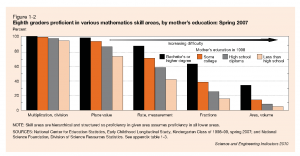Stupid white man criticizes smart Chinese woman
Various friends have sent me pointers to the Battle Hymn of the Tiger Mother book and associated controversy. The author, Amy Chua, has a Samoyed and is not impressed with the American education system, ergo, she and I must have been separated at birth. I enjoyed reading about Chua, Coco, and her daughters. Now, however, I’m being peppered with links of reactions to Chua’s book. The latest is a David Brooks op-ed in the New York Times. He says that Chua’s daughters, by piling on the accomplishments, don’t have time to develop their social skills and emotional intelligence. “They’ll grow up skilled and compliant but without the audacity to be great”. How is being an average American teenager harder than becoming a concert pianist?
“Practicing a piece of music for four hours requires focused attention, but it is nowhere near as cognitively demanding as a sleepover with 14-year-old girls. Managing status rivalries, negotiating group dynamics, understanding social norms, navigating the distinction between self and group — these and other social tests impose cognitive demands that blow away any intense tutoring session or a class at Yale.”
As the Samoyed Coco has no doubt mastered all of the above “social tests” that Brooks sets forth, I suppose he will be writing a recommendation for the bitch to attend Yale. She has demonstrated superior ability to those Chinese-American kids who have mere “book learning”.
I wonder if Brooks has visited unemployment offices lately. There are plenty of folks collecting checks who have wonderful social skills, who get along well with 14-year-old girls, and who have the audacity to think big. Sadly, however, their lack of measurable or discernible skills is keeping them from getting a job. Consider the person who excels at standardized tests, but lacks social skills. He passes an exam, gets a government job, and cannot be fired until he retires at age 52 with a full pension. Let’s assume that his lack of social skills prevent him from being productive, as Brooks suggest. That’s sad for the taxpayers, but it does not affect his ability to collect a paycheck. Let’s consider a driven test monkey who gets through medical school and becomes a radiologist. Will a hospital refuse to hire him because he can’t prove that 14-year-old girls like him? Given the small number of physicians per capita in the U.S., that seems unlikely. How about a numbers wizard who wants to work at a hedge fund? Is she going to encounter a 14-year-old girl executive who won’t hire her because she played the piano at Carnegie Hall like Sophia Chua rather than hanging out at the mall?
A person with good social skills may arguably be happier due to having a more pleasant spouse and having more fun day-to-day, but that wasn’t Brooks’s point. He was arguing that Chua’s daughters, though beautiful, intelligent, and accomplished, are lacking in some sort of productivity-enhancing achievement that Americans with complacent non-Chinese mothers possess. I.e., Brooks argues that Dean Vernon Wormer was wrong when he said that “fat, drunk, and stupid is no way to go through life, son”.
[I haven’t read the book yet, but I doubt that I’ll feel sorry for any kids who have grown up with Samoyeds in the house.]
[Update: I realize that I had this exact debate about five years ago. A friend and I walked past some kids player soccer. She stopped and looked approvingly. “This is so great for them. They’re building all kinds of teamwork and social skills that will help them in business.” I replied “You’re absolutely right. That’s why Nigeria and Argentina are the richest countries in the world.”]
Full post, including comments